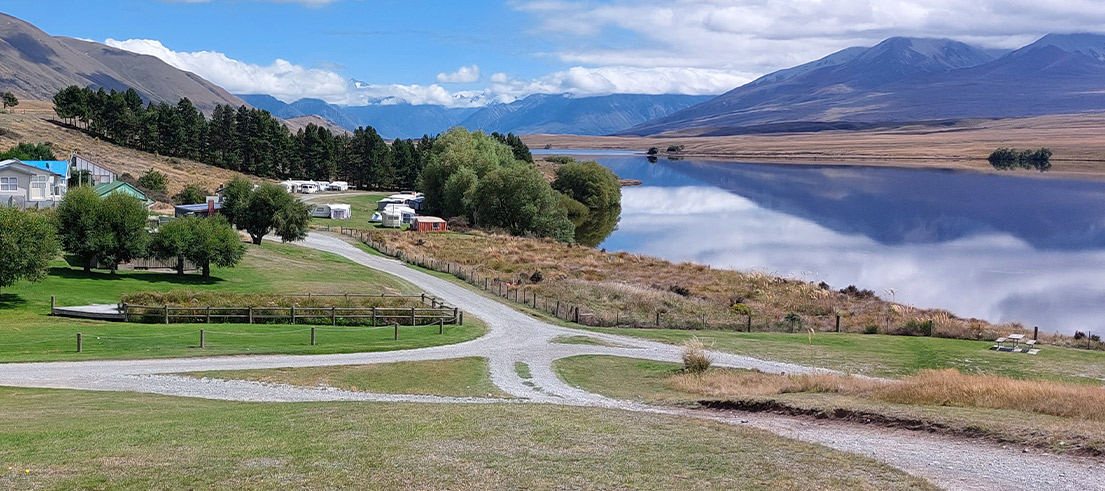
Underground water monitoring to help with next steps for lake health
Six extra pieces of water monitoring equipment are now in place at Te Puna-a-Taka/Lake Clearwater, as part of wider efforts to address concerns about water quality in the area.
The piezometers were installed 4 metres below the ground by our staff around the local huts settlement.
It was noisy work - but these inconspicuous, plastic tubes will provide valuable insight into the health of our precious Ōtūwharekai Ashburton Lakes and help inform the next stage of action.
Lake health
Te Puna-a-Taka is in danger of 'flipping' - that is, reaching a state of degradation that's very difficult to reverse. The wider area is of immense cultural significance to Ngāi Tahu Whānui - not only within their oral history but also being both an important seasonal mahinga kai area and a major travelling route between the settlements on the eastern coast of Te Waipounamu/South Island and those on Te Tai Poutini/West Coast. Its restoration is of huge importance to Rūnanga.
The decline could be due to a number of potential contributors including nutrients from farming activity, leaky wastewater tanks, and warming associated with climate change.
The good news is, we're making progress in understanding what is impacting lake ecology and - at the same time - taking immediate action to reduce nutrient loss to waterways.
Our Senior Scientist - Surface Water, Dr Tina Bayer, said the piezometers provide information about the flow paths of groundwater (water held underground in soil or rock crevices) and groundwater quality.
"We hope this information will help clarify nutrient and water pathways to Lake Clearwater, which will help to more effectively target lake restoration efforts."
Installation process
The installation process garnered a fair bit of attention from locals due to the heavy-duty nature of the work required.
The first step involves digging a hole, then a 'piezo driver' is used to ram a steel rod deep into the ground. This can take anything from a few minutes to a few hours, depending on the substrate.
A tube of plastic casing, dotted with fine holes to allow water in, is inserted into the hollow rod - which is then removed, leaving the casing behind.
When water quality samples are required - a generator, hosing, and pump are used to suck water out of the piezometer.
The groundwater team has committed to a six-month project for data collection in conjunction with their surface water colleagues.
At the end of the six months, the piezometers can either be removed or they can stay to support future work. They complement the surface water monitoring equipment in lakes Clearwater, Camp, Emma and Heron that's measuring the water level, temperature and oxygen. The station in Te-Puna-a-Taka/Lake Clearwater also measures algal biomass (amounts of algae) and turbidity (water clarity).
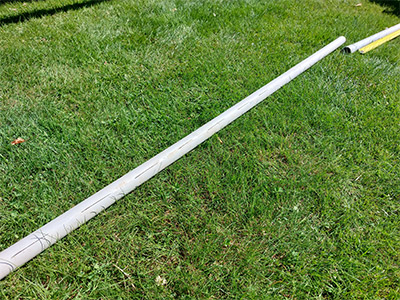
A piezometer is a plastic tube with small holes that allow water in.
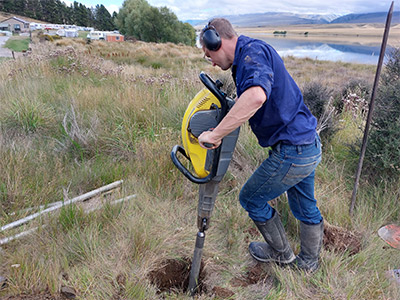
Senior groundwater science technician, Tom Johns, uses a 'piezo driver' as part of the installation process.
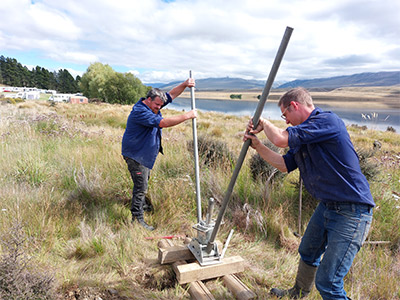
Removing the steel rod once the piezometer is in place.
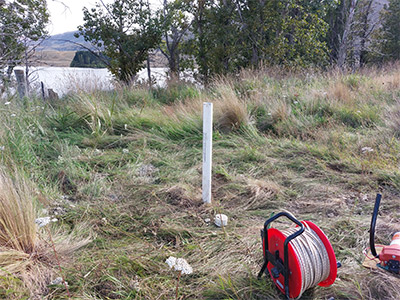
Installed piezometer.
Improving water quality
Meanwhile, other actions are being progressed to improve water quality as part of the Ōtūwharekai Lakes collaborative priority project.
Te Rūnanga o Arowhenua, Te Ngāi Tūāhuriri Rūnanga and Te Taumutu Rūnanga are partnering with ourselves, Ashburton District Council, statutory agencies and landowners to coordinate science, land management, planning and cultural mahinga kai work streams.
Our land management advisory team has been working directly with local farmers on immediate voluntary actions they can take to further reduce the risk of nutrient loss to waterways.
Alongside that, we're developing a lake-by-lake land use risk analysis, which will include the required nutrient reductions to improve lake water quality. At the same time, our Rūnanga partners are leading work to understand the changing environment through a mātauranga lens.
Dr Tim Davie, Director of Science, said each lake is unique, with different factors affecting nutrient levels.
"When we pull all these strands of work together we gain a better understanding of all factors we can target for catchment and in-lake interventions and progress towards lake restoration for the benefit of everyone."
